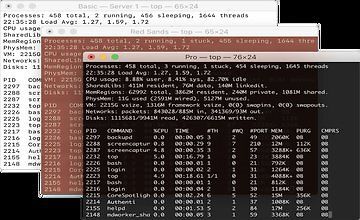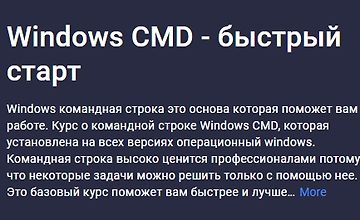
Rуmmy Sharp
Реми работает в Интернете с 1999 года и известен как эксперт в области JavaScript и отладки. Реми является основателем и куратором ffconf, чрезвычайно популярного в Великобритании события JavaScript.
Этот курс вылечить вас от страха перед терминалом. Он создан для дизайнеров, новых разработчиков, UX, UI, владельцев продуктов и всех, кому было предложено «просто открыть терминал».
Для кого этот курс? Дизайнеры, разработчики, новички и любой кто хочет научиться использовать терминал и командную строку, чтобы быть более эффективными, счастливыми и прибыльными.
Использование терминала помогает оптимизировать рабочий процесс и упростить выполнение повторяющихся задач, что делает работу более счастливой и прибыльной.
Ранние модули курса нацелены на новичков, которые не знают с чего начать. К концу курса вы будете изучать персонализацию своего терминала, пользовательские псевдонимы, как захватить веб-контент и манипулировать им с помощью grep, awk и многого другого.
Что ты узнаешь в этом курсе:

Реми работает в Интернете с 1999 года и известен как эксперт в области JavaScript и отладки. Реми является основателем и куратором ffconf, чрезвычайно популярного в Великобритании события JavaScript.

Тестировщик всегда работает в условиях недостатка времени: беклог не уменьшается, релиз на носу, а протестировать нужно еще многое. Чтобы обеспечить качество продукта, нужно постоянно повышать эффективность собственной работы. Один из способов - освоить некоторые инструменты, облегчающие рутинные действия в тестировании.

Видеокурс подойдёт для начинающих разработчиков. В данном видеокурсе будет рассказано про основы работы с консолью, мы рассмотрим базовые команды и разберемся, зачем консоль нужна веб-разработчику.

Командная строка в Linux - один из самых продуктивных инструментов, которые вы можете иметь в своем наборе инструментов. Многие разработчики считают эти инструменты пугающими и не знают, с чего начать, но в этом курсе мы познакомим вас от начала до уровня компетентности в течение курса.

Используйте командную строку для интеграции инструментов проектирования и разработки, таких как Sass, PostCSS, Gulp, Jekyll и Webpack, в свой рабочий процесс.

Windows командная строка это основа которая поможет вам в работе. Курс о командной строке Windows CMD, которая установлена на всех версиях операционный windows. Командная строка высоко ценится профессионалами потому что некоторые задачи можно решить только с помощью нее. Это базовый курс поможет вам быстрее и лучше понять как работать в командной строке Windows CMD.
https://terminal.training/#course-material